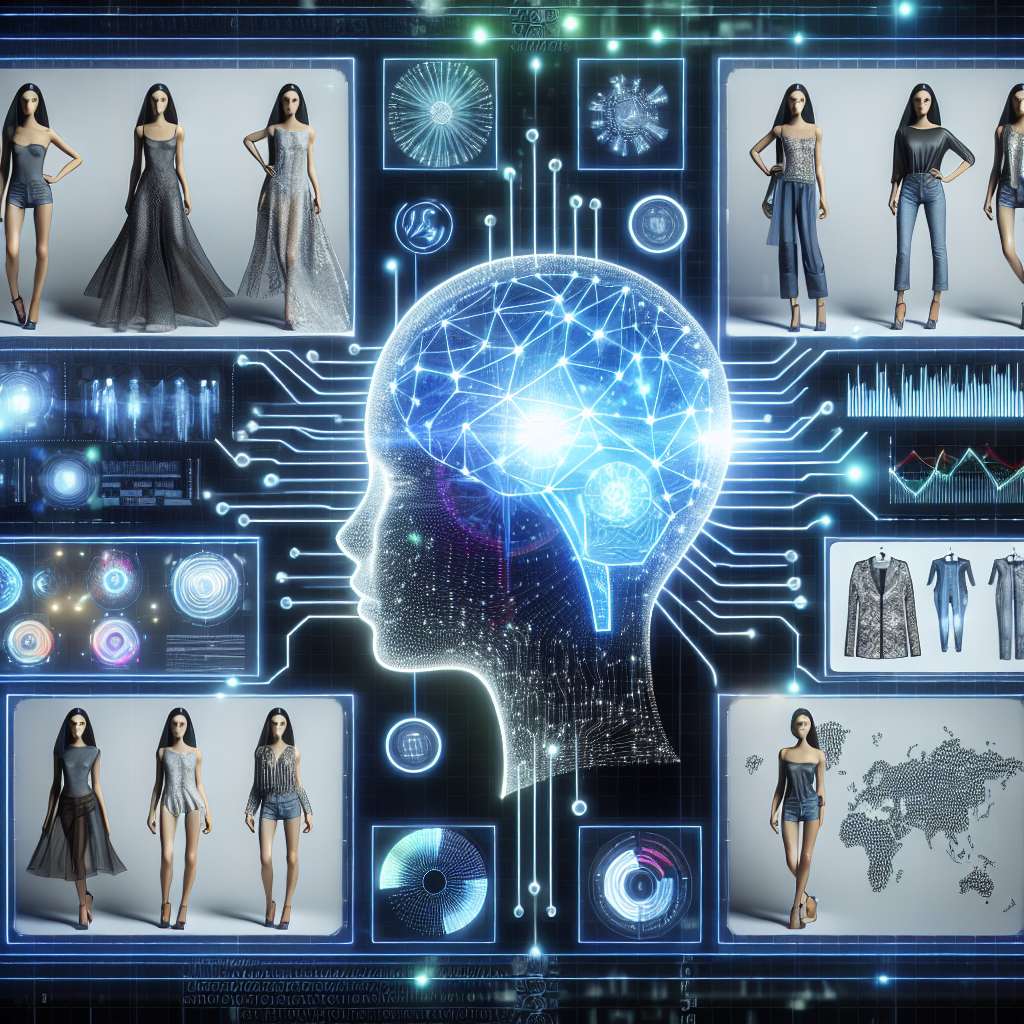Artificial Intelligence (AI) has disrupted many industries in recent years, and the fashion industry is no exception. With the rise of e-commerce and social media, fashion brands and retailers are constantly looking for ways to stay ahead of the competition and predict future trends. This is where AI comes in, offering powerful tools and technologies that can revolutionize the way fashion forecasting is done.
Fashion forecasting is the process of predicting future fashion trends, colors, styles, and materials based on consumer behavior, market research, and historical data. Traditionally, fashion forecasting has been a labor-intensive process that relies heavily on human intuition and creativity. However, with the advent of AI, fashion forecasting has become more data-driven and accurate than ever before.
One of the key ways in which AI is revolutionizing fashion forecasting is through the use of machine learning algorithms. These algorithms can analyze vast amounts of data from sources such as social media, e-commerce websites, fashion shows, and historical sales data to identify patterns, trends, and consumer preferences. By analyzing this data, AI can predict future trends with a high degree of accuracy, helping fashion brands and retailers make informed decisions about which products to design, produce, and market.
Another way in which AI is transforming fashion forecasting is through the use of computer vision technology. Computer vision technology allows AI systems to analyze images and videos to identify patterns, colors, shapes, and styles in fashion trends. By analyzing images from social media, fashion shows, and street style, AI can identify emerging trends and predict which styles will be popular in the future.
In addition to machine learning and computer vision, AI is also being used in the fashion industry to personalize the shopping experience for consumers. By analyzing data on consumer preferences, purchase history, and browsing behavior, AI can recommend personalized product recommendations to shoppers, helping them find products that match their style and preferences. This not only improves the shopping experience for consumers but also helps fashion brands and retailers increase sales and customer loyalty.
Overall, AI is revolutionizing fashion forecasting by making it more data-driven, accurate, and personalized than ever before. By analyzing vast amounts of data, identifying patterns and trends, and personalizing the shopping experience, AI is helping fashion brands and retailers stay ahead of the competition and predict future trends with a high degree of accuracy.
FAQs:
Q: How is AI used in fashion forecasting?
A: AI is used in fashion forecasting through machine learning algorithms, computer vision technology, and data analysis. These technologies allow AI systems to analyze vast amounts of data from sources such as social media, e-commerce websites, fashion shows, and historical sales data to predict future trends with a high degree of accuracy.
Q: How accurate is AI in predicting fashion trends?
A: AI is very accurate in predicting fashion trends, as it can analyze vast amounts of data and identify patterns and trends that humans may not be able to see. By analyzing data from social media, e-commerce websites, fashion shows, and historical sales data, AI can predict future trends with a high degree of accuracy.
Q: How does AI personalize the shopping experience for consumers?
A: AI personalizes the shopping experience for consumers by analyzing data on consumer preferences, purchase history, and browsing behavior. By analyzing this data, AI can recommend personalized product recommendations to shoppers, helping them find products that match their style and preferences.
Q: How are fashion brands and retailers using AI in their business?
A: Fashion brands and retailers are using AI in their business to improve fashion forecasting, personalize the shopping experience for consumers, and increase sales and customer loyalty. By analyzing data and predicting future trends, AI helps fashion brands and retailers stay ahead of the competition and make informed decisions about which products to design, produce, and market.

